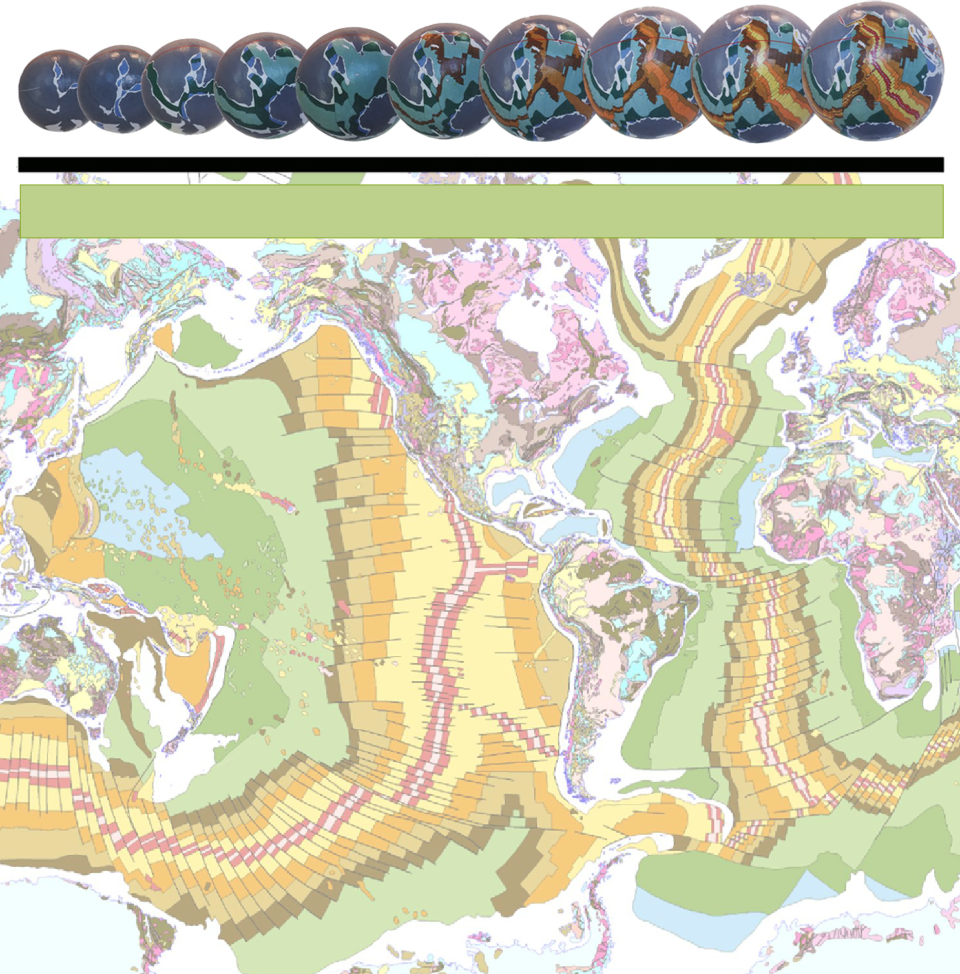

ANCIENT SUPERCONTINENTS
In plate tectonic studies the ancient supercontinents represent the assemblage of fragmented remains of more ancient supercontinents. The present continents, in turn, represent the assemblage of more recent fragmented crustal remains.
On these conventional tectonic reconstructions there are a multitude of identified ancient supercontinents, most notably called Pangaea, Gondwana, Laurentia, Baltica, Laurussia, and Rodinia, each with its own separate crustal assemblage, breakup, dispersal, and subsequent collisional histories.
While the primary continental crustal components of each of these conventional plate tectonic supercontinents are essentially the same as presented here, the configuration and assemblage of the ancient supercontinents on an Expansion Tectonic Earth, as well as the reasons why, differ markedly from conventional assemblages.
On all Expansion Tectonic small Earth models there are no requirements for random, non-
Instead, at the reduced Earth radii shown by the small Earth models in the figure below, these ancient supercontinental crusts are shown to tightly wrap around each of the ancient small Earth models. These crusts are then shown to assemble against continents that were otherwise not previously considered to be related on conventional assemblages.
On an Expansion Tectonic Earth, it is the distribution of the ancient continental seas, as well as the changes in coastal outlines and sea levels, that define the development and configuration of the ancient supercontinents, not because of random breakup, collision, or assemblage processes.

Distribution of ancient supercontinents and seas shown on Archaean to present-
All crustal fragments making up the ancient supercontinents are shown to retain an intimate relationship throughout Earth history, lasting until crustal breakup was initiated and the modern oceans began to open during the late-
In the following sections, discussion will start with the earliest primordial Archaean supercontinent and then move forward in time through to Rodinia, Gondwana, and finally to Pangaea. It should be noted that there are many published variations of these conventional supercontinental assemblages, as well as a multitude of lesser continental fragments. These lesser fragments are generally poorly defined, with a strong emphasis on variations in their locations rather than their definitive crustal shapes or assemblages.
The term supercontinent, as used here, differs somewhat from plate tectonic studies where it is used to imply an assemblage of ancient crustal fragments. The term supercontinent is instead used here purely and simply to distinguish between the ancient continental crusts and the modern continents.
On an Expansion Tectonic Earth it is reiterated that it is the distribution of continental seas that defines the ancient supercontinents, not an arbitrary assemblage of fragmented crusts.